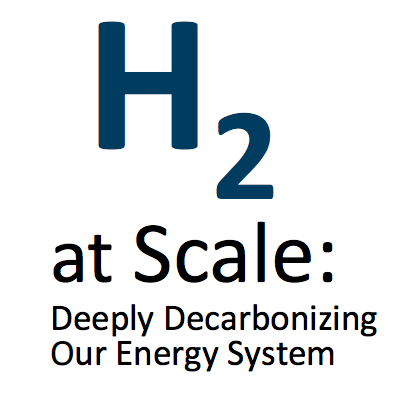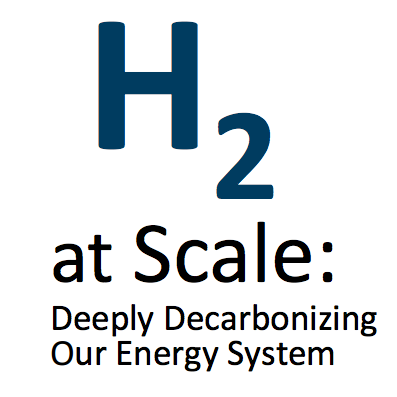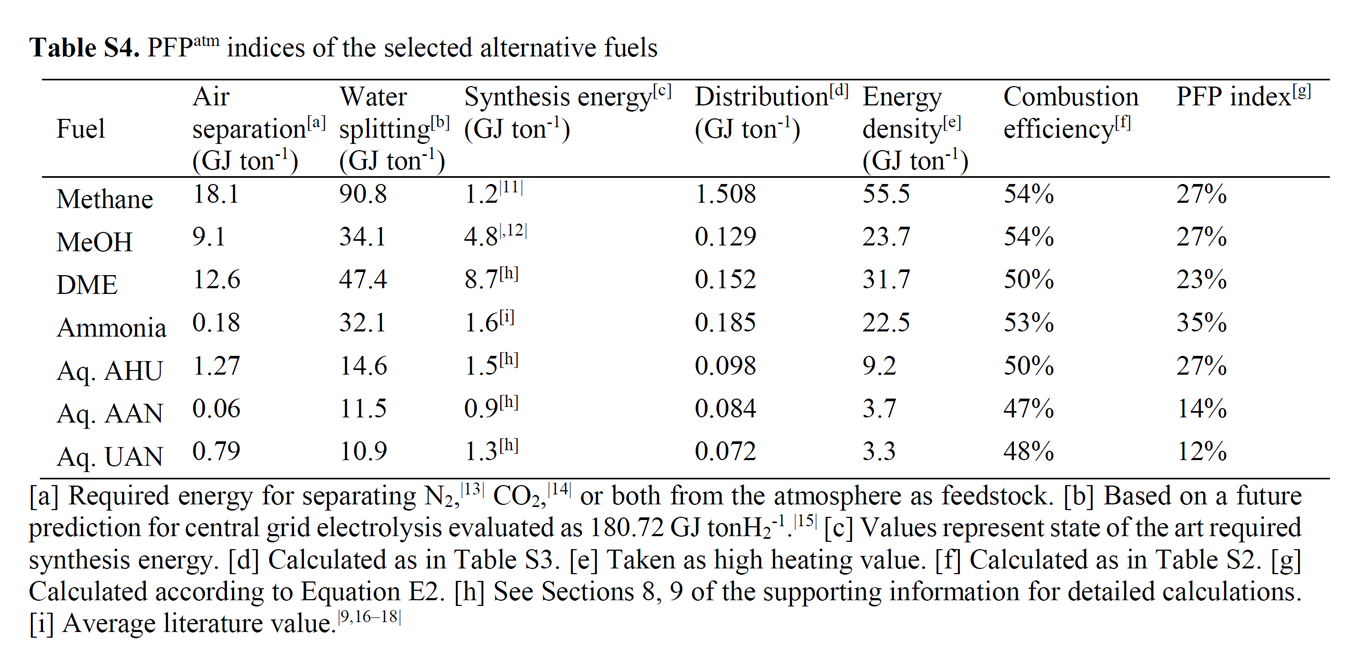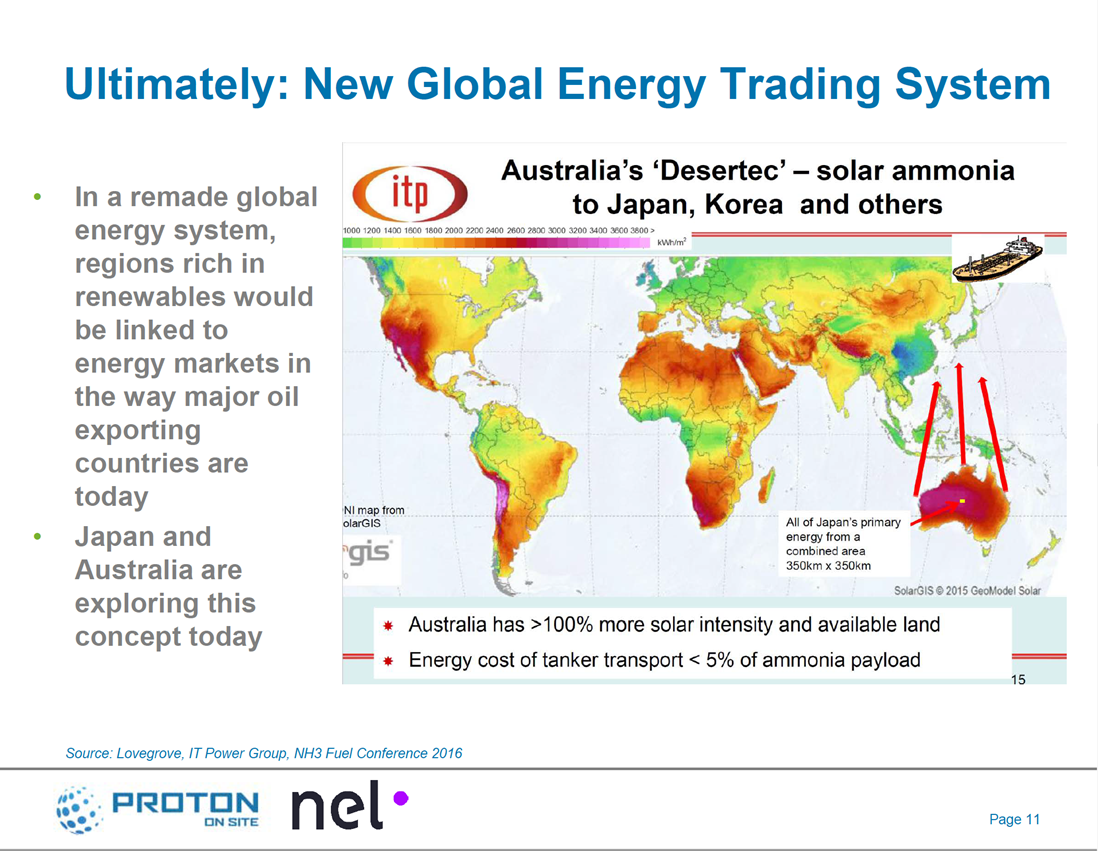Last month the U.S. Department of Energy’s Office of Energy Efficiency and Renewable Energy (EERE) issued a USD$64 million funding opportunity announcement (FOA) on behalf of the H2@Scale program. H2@Scale was launched in 2016 by representatives of several U.S. national laboratories with the goal of moving hydrogen energy technologies toward practical implementation. It is certainly one of the United States’ main vehicles for advancing the hydrogen economy. Given this, the program’s investments will do much to determine whether the U.S. is a leader or follower in ammonia energy. In June 2017, Ammonia Energy reported that “ammonia energy had started to move from the extreme periphery of the H2@Scale conceptual map toward its more trafficked precincts.” The EERE FOA shows that while progress is being made, the journey is not yet complete.
Content Related to H2@Scale
Article
H2@Scale in California: A Role for Ammonia?
Stephen H. Crolius January 25, 2018
The U.S. Department of Energy H2@Scale program’s November 2017 workshop in California included mention of ammonia as a constituent of a future hydrogen economy. It also highlighted the relevance ammonia energy could have in California. California stands out globally as a large economy that is strongly committed to development of a hydrogen economy. The state’s strategy for hydrogen-powered transportation involves reducing the production cost of renewable hydrogen and the capital and operating costs of hydrogen fueling stations. It does not explicitly address the cost of intermediate hydrogen logistics. The question of cost is of utmost importance because California has so far put $120 million of public funds into hydrogen fueling stations and intends to invest an additional $20 million per year through 2022. The state’s aspiration is to move to a point where hydrogen that is used as a motor fuel is free of public subsidy. So it clearly behooves the state to investigate how ammonia could be used as a cost-reducing energy carrier. Toyota is active in California’s hydrogen movement and has announced plans to build a renewable hydrogen plant that will use cow manure as a feedstock. A project with a different conception, one that draws upon the solar and wind resources of the Mojave Desert to produce renewable hydrogen and logistically advantaged ammonia, would align better with the state’s sustainability objectives.
Article
N-Fuels vs. C-Fuels: Nitrogen “superior” to carbon as a hydrogen carrier
Stephen H. Crolius November 17, 2017
Gideon Grader, a Faculty Dean at Technion Israel Institute of Technology, and Bar Mosevitzky, one of the members of his laboratory, spoke in separate talks at the NH3 Energy + Topical Conference about one of the Grader Research Group’s key focuses: nitrogen-based energy carriers. Grader and his team champion the idea that ammonia can be the starting rather than ending point for nitrogen-containing fuels for heat engines. The focuses of their research include ammonium hydroxide ammonium nitrate (AAN), ammonium hydroxide urea (AHU), and urea ammonium nitrate (UAN). As described below, this work is an indispensable addition to the C-fuel vs. N-fuel debate well known to proponents of ammonia energy. And the Grader team stakes out a position: per the abstract of Grader’s talk, “using nitrogen as a hydrogen carrier can potentially offer a superior option.”
Article
Ammonia Energy Gains Recognition from U.S. Department of Energy
Stephen H. Crolius October 05, 2017
In the last 12 months ... Ammonia energy has gained recognition from the United States Department of Energy, in both bottom-up and top-down programs. This establishes ammonia energy in the world’s largest economy as a legitimate target for both public- and private-sector investment.
Article
Ammonia Energy at the H2@Scale Workshop
Stephen H. Crolius June 08, 2017
“Carbon-free ammonia needs to be a significant contributor to the H2@Scale initiative.” This was one of the “key takeaways” offered by Steve Szymanski, Director of Business Development at the hydrogen generator company Proton On-Site, during his presentation at the H2@Scale Workshop that was held on May 23-24 at the University of Houston in the U.S. By the time Szymanski left the podium, ammonia energy had moved a good distance from the periphery of the H2@Scale conceptual map toward its center.



